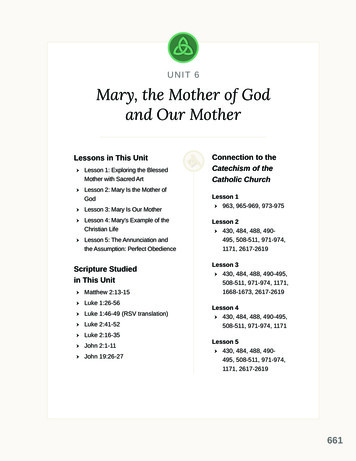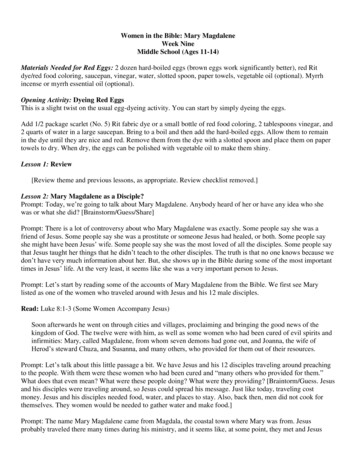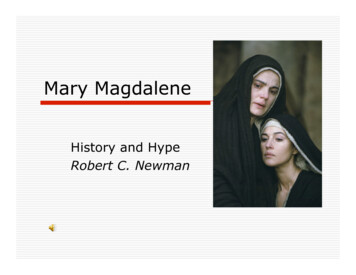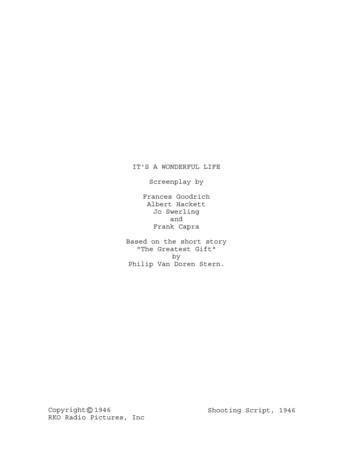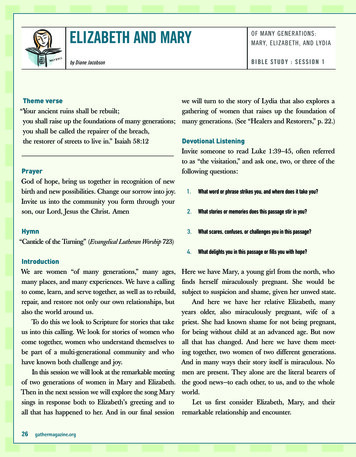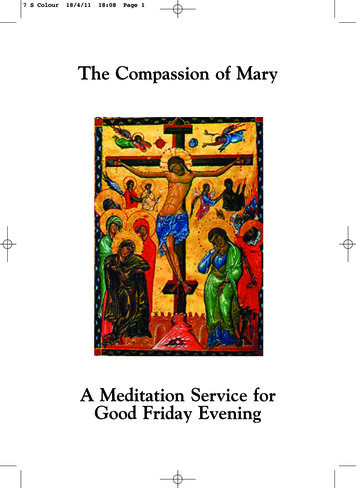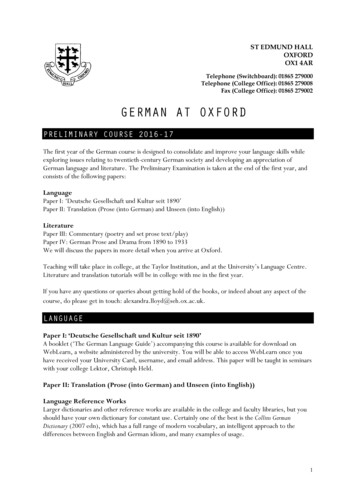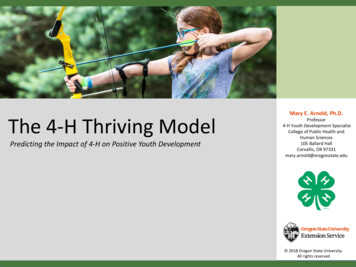
Transcription
Mary E. Arnold, Ph.D.The 4-H Thriving ModelPredicting the Impact of 4-H on Positive Youth DevelopmentProfessor4-H Youth Development SpecialistCollege of Public Health andHuman Sciences105 Ballard HallCorvallis, OR 97331mary.arnold@oregonstate.edu 2018 Oregon State University.All rights reserved
The 4-H Thriving ModelThe 4-H Thriving model predicts that youth who participate in 4-Hprograms that provide a high quality developmental context will thrive,and thriving youth achieve key developmental outcomes.
The 4-H Developmental Context4-H programs done well help you thrive by Sparks Providing a place for youth to explore theirinterests and passions – their sparks!Youth ProgramQuality Offering programs that follow youthprogram quality principles with a focus onyouth belongingYouth-AdultRelationships Emphasizing developmentalrelationships with adults who are caring,challenge growth, and share power
Thriving Youth Challenge yGoalManagement Have an intrinsic desire and willingness to try new challenges Cultivate a growth mindset that emphasizes effort in learning over innate ability Believe in a hopeful future and purpose in life Are connected to something greater than the self that provides meaning and purpose in life and shapes everyday thoughts andaction Demonstrate the pro-social values of respect, honesty, responsibility, empathy and helping Are able to express and manage emotions appropriately Set and manage goals, with perseverance toward goal achievement
Thriving Youth Reach Key Developmental OutcomesYouth who thrive because of participating in 4-H Academic Achievement and MotivationSocial CompetencePYDHigh Personal StandardsContribution to OthersConnection with OthersPersonal ResponsibilityDevelopmental outcomes are indicators of Positive Youth Development (PYD)
Structural Properties of the 4-H Thriving Model**Youth Engagement Moderates the RelationshipBetween Developmental Context and Youth ThrivingThriving Mediates the RelationshipBetween Developmental Context and Youth ThrivingYouth Thrivingβ .713**β. 734**β xtβ -.112 (ns)**p. .001** As reported in Arnold & Gagnon, 2018b
Developmental Outcomes (PYD)Lead to Long Term 4-H Program OutcomesHead Academic or vocational successHeart Contribution to others through civicengagementHands Employability and economic stabilityHealth Happiness and well being
ReferencesArnold, M. E. & Gagnon, R. J. (2018a). The mediating effects of youth thriving on youth development program outcomes. Manuscriptsubmitted for publication.Arnold, M. E. & Gagnon, R. J. (2018a). The 4-H Thriving Model: Confirming the mediating effects of youth thriving on positive youthdevelopment. Manuscript submitted for publication.Arnold, M. E. (2018). From context to outcomes: Adolescent thriving in 4-H Youth Development Programs. Journal of Human Scienceand Extension, 6(1), 141-160.Arnold, M. E. (2017). Supporting adolescent exploration and commitment: Identity formation, thriving and positive youthdevelopment. Journal of Youth Development, 12(4), 1-15.Benson, P. L. & Scales, P. C. (2009). The definition and preliminary measurement of thriving in adolescence. Journal of PositivePsychology, 4(1), 95-104.Benson, P. L., & Scales, P. C. (2011). Thriving and sparks. In R. J. R Leveque (Ed.), Encyclopedia of Adolescence (pp. 2963-2976). NewYork: Springer.Lerner, R. M., Lerner, J. V., von Eye, A., Bowers, E. P., & Lewin-Bizan, S. (2011). Individual and contextual bases of thriving inadolescence: A view of the issues. Journal of Adolescence, 34, 1107-1114.Li, J., & Julian, M. M. (2012). Developmental relationships as an active ingredient: A unifying working hypothesis of “what works”across intervention settings. American Journal of Orthopsychiatry, 82(20), 157-166).Roehlkepartain, E. C., Pekel, K., Syvertsen, A. K., Sethi, J., Sullivan, T., K., 7 Scales, P. C. (2017). Relationships first: Creating connectionsthat help young people thrive. Minneapolis, MN: Search Institute.Scales, P.C., Benson, P. L., & Roehlkepartain, E. C. (2011). Adolescent thriving: The role of sparks, relationships, and empowerment.Journal of Youth and Adolescence, 40, 263-277.Search Institute (2014a). The Search Institute model of thriving orientation: Overview of its evolution through recent funding from theThrive Foundation for Youth. Unpublished paper. Minneapolis, MN: Author.Search Institute (2014b). The developmental relationships framework. Minneapolis, MN: Author.For More Information on the 4-H Thriving Model Please Contact:Dr. Mary E. ArnoldProfessor and Youth Development SpecialistOregon State University541.737.1315 mary.arnold@oregonstate.edu
Health Happiness and well being. References Arnold, M. E. & Gagnon, R. J. (2018a). The mediating effects of youth thriving on youth development . Li, J., & Julian, M. M. (2012). Developmental relationships as an active ingredient: A unifying working hypothesis of what works across intervention settings. American Journal of Orthopsychiatry .

